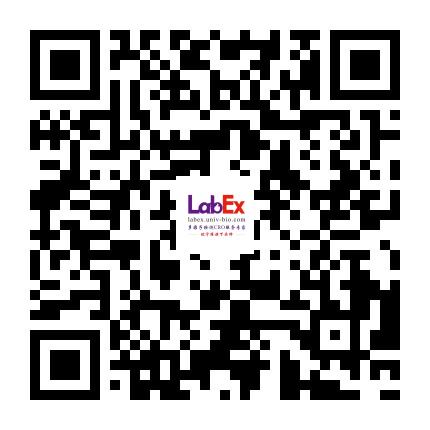Neuroinflammation in the anterior cingulate cortex: the potential supraspinal mechanism underlying the mirror-image pain following motor fiber injury
Anterior cingulate cortex; Chemokine; Mirror-image pain; Neuropathic pain; Spinal cord.- J Neuroinflammation
- 9.3
- 2022 Jun 20;19(1):162.
- Rat
- 抗体芯片
- 神经系统
- 神经系统
- 神经炎症
- CCL2/JE/MCP-1,G-CSF,MAG/Siglec-4a,CCL3/CCL4/MIP-1α/β,GDF-15,MMP-2,CCL5/RANTES,GM-CSF,MMP-3,CCL11/Eotaxin,Hepassocin,MMP-9,CCL17/TARC,HGF,Neprilysin/CD10,CCL20/MIP-3α,ICAM-1/CD54,NOV/CCN3,CCL21/6Ckine,IFN-γ,NT-3,CCL22/MDC,IGF-I,NT-4,Clusterin,IGFBP-2,Osteopontin (OPN),CNTF,IGFBP-3,Osteoprotegerin/TNFRSF11B,CX3CL1/Fractalkine,IGFBP-5,PDGF-BB,CXCL2/GROβ/MIP-2/CINC-3,IGFBP-6,Pref-1/DLK1/FA1,CXCL7/Thymus Chemokine-1,IL-1α/IL-1F1,Prolactin,Cyr61/CCN1,IL-1β/IL-1F2,RAGE,Cystatin C,IL-1ra/IL-1F3,RBP4,DPPIV/CD26,IL-2,Resistin,EGF,IL-3,RGM-A,EG-VEGF,IL-4,SCF,Endostatin,IL-6,Serpin E1/PAI-1,Fetuin A,IL-13,TIM-1/KIM-1/HAVCR,FGF acidic,IL-17A,TNF-α,FGF-7,IL-22,TWEAK/TNFSF12,FGF-21,Jagged 1,VCAM-1/CD106,Fibulin 3,LIF,VEGF,Flt-3 Ligand,Lipocalin-2/NGAL,WISP-1/CCN,Galectin-1
相关货号
LXAR076-1
Abstract
Background:Peripheral nerve inflammation or lesion can affect contralateral healthy structures, and thus result in mirror-image pain. Supraspinal structures play important roles in the occurrence of mirror pain. The anterior cingulate cortex (ACC) is a first-order cortical region that responds to painful stimuli. In the present study, we systematically investigate and compare the neuroimmune changes in the bilateral ACC region using unilateral- (spared nerve injury, SNI) and mirror-(L5 ventral root transection, L5-VRT) pain models, aiming to explore the potential supraspinal neuroimmune mechanism underlying the mirror-image pain. Methods:The up-and-down method with von Frey hairs was used to measure the mechanical allodynia. Viral injections for the designer receptors exclusively activated by designer drugs (DREADD) were used to modulate ACC glutamatergic neurons. Immunohistochemistry, immunofluorescence, western blotting, protein microarray were used to detect the regulation of inflammatory signaling. Results:Increased expressions of tumor necrosis factor alpha (TNF-α), interleukin-6 (IL-6) and chemokine CX3CL1 in ACC induced by unilateral nerve injury were observed on the contralateral side in the SNI group but on the bilateral side in the L5-VRT group, representing a stronger immune response to L5-VRT surgery. In remote ACC, both SNI and L5-VRT induced robust bilateral increase in the protein level of Nav1.6 (SCN8A), a major voltage-gated sodium channel (VGSC) that regulates neuronal activity in the mammalian nervous system. However, the L5-VRT-induced Nav1.6 response occurred at PO 3d, earlier than the SNI-induced one, 7 days after surgery. Modulating ACC glutamatergic neurons via DREADD-Gq or DREADD-Gi greatly changed the ACC CX3CL1 levels and the mechanical paw withdrawal threshold. Neutralization of endogenous ACC CX3CL1 by contralateral anti-CX3CL1 antibody attenuated the induction and the maintenance of mechanical allodynia and eliminated the upregulation of CX3CL1, TNF-α and Nav1.6 protein levels in ACC induced by SNI. Furthermore, contralateral ACC anti-CX3CL1 also inhibited the expression of ipsilateral spinal c-Fos, Iba1, CD11b, TNF-α and IL-6. Conclusions:The descending facilitation function mediated by CX3CL1 and its downstream cascade may play a pivotal role, leading to enhanced pain sensitization and even mirror-image pain. Strategies that target chemokine-mediated ACC hyperexcitability may lead to novel therapies for the treatment of neuropathic pain.Keywords:Anterior cingulate cortex; Chemokine; Mirror-image pain; Neuropathic pain; Spinal cord.
金课堂之文献解析 文献原文请点击
本网站销售的所有产品及服务均不得用于人类或动物之临床诊断或治疗,仅可用于工业或者科研等非医疗目的。







 沪公网安备31011502400759号
沪公网安备31011502400759号
 营业执照(三证合一)
营业执照(三证合一)


